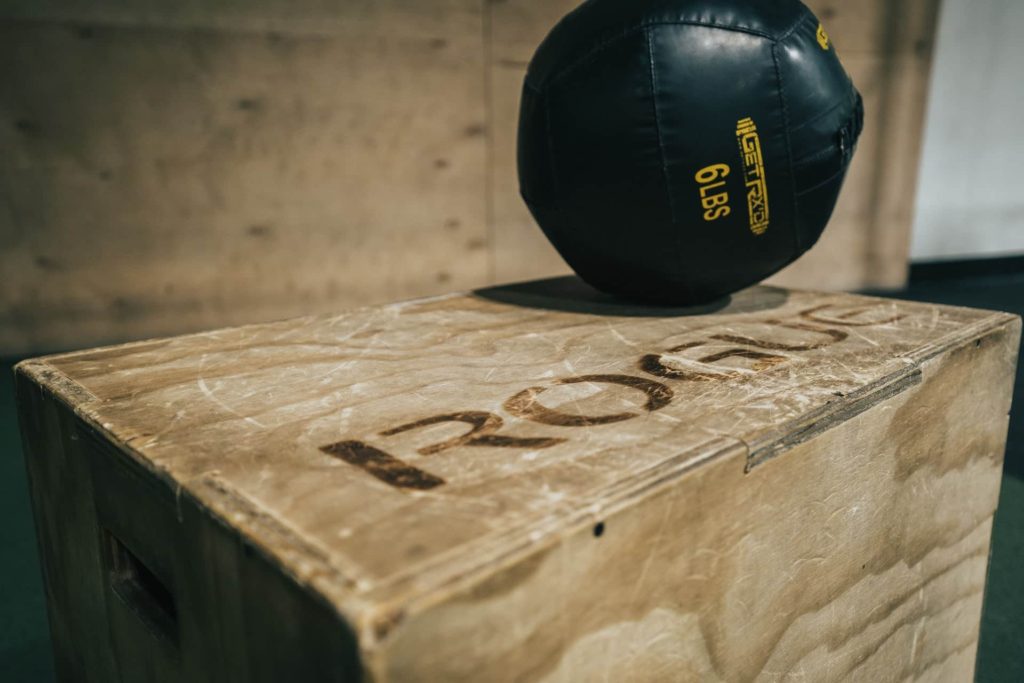Roadwork as a way to get fit for boxing is a tried and true tradition. Like most traditions, they are rooted in the culture of the sport. Boxing has been around for centuries with the earliest recorded evidence of boxing dating back to 3000 BC. That is a lot of time for the tradition of roadwork to become rooted in boxing.
If you are not familiar with roadwork, it is simply a term meaning performing low-intensity steady-state running for long durations. While it may sound like a simple way to develop the endurance needed to be conditioned for boxing, there are some inherent problems with this approach.
Roadwork doesn’t match the biodynamic structure of boxing. Meaning musculature and movements don’t match. Being conditioned for a boxing match requires the ability to throw a volume of punches at high velocities, interspersed with bobbing, weaving, and footwork. While roadwork will develop aerobic capacity, the carryover will be minimal to throwing a large number of punches.
So why do boxers swear by roadwork as the ultimate conditioning tool? Perhaps there are alternatives that would be better?
Why Do Boxers Do Roadwork?

Other than roadwork being a tradition in the sport of boxing, the main purpose of roadwork is to develop the aerobic base needed for boxing. The aerobic energy system is often overlooked in boxing since rounds only last for three minutes. The natural inclination is to perform high-intensity interval training that mimics these fight rounds.
However, low-intensity aerobic training, such as roadwork, provides adaptations to the heart and muscles that high-intensity training won’t. Long duration, steady-state cardio (aka cardiac output) increases the size of the heart chamber where blood enters before being pumped around the body. This means that more blood can be pumped with each heartbeat delivering more oxygen to the working muscles.
The ability to deliver oxygen is important. But so is the ability to utilize it at the muscular level. Cardiac output training builds vascular networks of capillaries that allow oxygen and nutrients to be delivered to the working muscles. See “What Is Conditioning Training” for an in-depth look into aerobic training.
This now sounds like a raving review for performing roadwork. Why would you not want to go for a long run?
Why Do Boxers Run So Early In The Morning?
Boxers will run early in the morning to allow enough recovery before their boxing workout. This way, their roadwork doesn’t interfere as much with their other training sessions.
If you had your first boxing session at 10 am, and you ran at 8 am, you’d only allow approximately one hour to recover before training.
However, if you did your roadwork at 6 am, you’ve scored yourself an extra 3 hours of recovery.
Do Heavyweight Boxers Run?
Heavyweight boxers do run. Take Mike Tyson for example who would spend his early mornings on the road. Do I believe it’s the best idea for a heavyweight boxer to perform roadwork? No.
I believe there are far better options at your disposal than hitting the roads especially when you are of heavier bodyweight.
Why You Should NOT Use Roadwork For Conditioning For Boxing
Roadwork does not match the biodynamic structure of boxing so while the heart adaptations are beneficial for boxing, the capillary network being built is around the working muscles. These mainly being the legs.
While the legs do play a great role in boxing, from contributing to knock out power to being able to stay light on the feet for a whole boxing match, the shoulders and arms fatigue much quicker being smaller muscle groups.
In order to optimize conditioning for boxing, low-intensity cardiac output should focus on throwing punches.
The other problem with roadwork is the pounding joints can take when running on pavement. If you are a lighter weight class or you’ve run a lot in the past, then there likely isn’t much of an issue with joint pain.
However, heavier weight class or boxers that are new to running should avoid roadwork all together if boxing is the main priority. When running, 5 to 12x of body weight goes through the knee. Having these forces pass through the knee is unnecessary. If performing conditioning outside of boxing, there are plenty of off-feet pieces of cardio equipment that can be used instead to mitigate any impact.
What You Should Do For Boxing Conditioning Instead Of Roadwork

This article wouldn’t be complete without offering you a solution. So here it is…
Box.
Building a dense capillary network around your upper body while performing the actions you perform in boxing will provide you with the best conditioning stimulus. How should you go about implementing steady-state cardio using boxing?
Firstly, you will need a heart rate monitor. No, not those smartwatch fitness trackers which you can’t wear anyway with boxing gloves. A real heart rate monitor. I recommend the heart rate monitor from Polar. It easily connects to your phone through their app and you can track your heart rate live.
I personally use it myself. You can keep track of your sessions and make sure you are training in the correct heart rate zone.
Secondly, there are a couple of ways you can design your cardiac output training for boxing.
Option 1
Continuous boxing against a bag of your choice or multiple bags within the session.
Option 2
Using different modalities within the session to provide some variety. Regardless, this training will be boring! Boring but effective.
Your heart rate must sit between 130-150 BPM. Performing this training at heart rates higher than 150 BPM won’t allow the heart to fill up fully with blood and stretch the chambers which is what allows the heart to increase the size of the chambers to pump more blood with each beat.
Start at 30 min of continuous work. Over time, progress to being able to perform 60-90 minutes in a single, continuous session.
With Option 1, box at a steady pace against a bag of your choice while keeping your heart rate between this range. You will likely start out too fast as you feel fresh and it will feel easy. But it will become apparent very quickly that 30 mins is a long time. Start slower than you think is necessary. Don’t throw punches at maximum intensity.
Here’s a good example. Not specifically boxing but the general principle is there.
With Option 2, you can break up your continuous session by changing your exercise. For example, it could be 10 minutes on the heavy bag, 5 minutes shadow boxing, 5 minutes skipping, and 10 minutes speedball.
A simple progression could be something like this:
Week 1: 30 mins
Week 2: 40 mins
Week 3: 50 mins
Week 4: 60 mins
If you are boxing every day already, you may want to perform your extra conditioning away from boxing. That doesn’t mean you should sit on a bike and pound your legs. Use a medicine ball.
Medicine ball circuits provide the perfect whole-body conditioning stimulus for boxing. You can use the same parameters as above. If you have access to off-feet equipment, you can use them as part of your circuit.
Medicine Ball Circuit For Boxing

1. Single Arm Chest Pass (boxing stance) x10/arm
2. Push Press Throw x10
3. Rotational Throw Rebound x10/side
4. Forward Scoop Toss x10
5. Side to Side Slam x10/side
6. Overhead Scoop Toss x10
7. Chest Pass Rebound x20
After every 5 circuits, perform 5 minutes of shadowboxing. Repeat until session time is finished.
Is Roadwork Necessary For Boxing?
Roadwork is not necessary for boxing. The options presented above provide much better alternatives to get into boxing shape. Roadwork is part of the boxing tradition and that is why it is so prevalent in today’s boxing conditioning repertoire.
Biggest, Baddest Gas Tank In Just 8 Weeks
The Dominate The Ring Conditioning System is specifically designed to develop elite level boxing cardio based on your easy to implement test results.



